
Initial scan. Looks pretty messy.
For this week's assignment, one of my classmates Jeremy Guillette generously offered to allow those of us participating in the Harvard section of the How To Make (Almost) Anything class to use the Harvard History Department's Artec Space Spider 3D scanner. In his words:
To keep scanning short and successful, there are some best practices for selecting objects. First of all, for a quick scan you should find something not much bigger than your fist. For materials, anything that's either dark or shiny will be difficult to scan, and something that's both will be more difficult. If you only care about the shape and it's not a very precious object, we can spray it with chalk to scan it. Also, something with a lot of nooks and crannies might lose detail in those nooks, since the scanner will have a harder time "seeing" them.
He also stressed that the objects we choose should be rigid, since we'll need to scan it multiple times from multiple angles which only works if the object retains the exact same shape each time.
With these criteria in mind, I decided to scan a small succulent I had in my office. The succulent actually belongs to a colleague of mine and I've been holding onto it for him for safe keeping. The shape is reasonably complex, and I was curious to see how well a scan could capture the plant's detailed color and texture.


The scanner itself looks something akin to an iron with too many eyes, and the act of scanning feels something like operating a wide-nozzled aerosol sprayer very slowly and deliberately to get inside every nook and cranny. Jeremy kindly gave me a quick demo before leaving me to do most of the patient legwork.

Notice the detailed print placed under the succulent. While attractive in its own right, this print was used to help the scanner to orient itself as it moved around the succulent, and as the turntable stage was rotated underneath (in fact, that's what Jeremy's carefully turning in the photo above). Below is an example of the live readout from the scanner. The histogram on the left provides real-time feedback of how near or far the sensor is from what it's sensing, with a green sweet-spot in the middle.

While not too complicated from a user perspective, the process of 3D scanning with the Spider was rather time-intensive. The scanner gets such high-quality scans in part by combining together multiple, separate scans of the same object. This allows you to reorient the object to capture it from all sides, such as by flipping it upside down. In my case, I just took a few different scans of the plant trying to catch it from as many different angles as I could.
The software generates a point-cloud from each scan, aligns these point-clouds together, and then does some computational magic to merge the data it collected into a single, textured mesh. Toward the end of the project, the scan's working directory on the desktop was over 11GB large (with the final 3D files being nearly 100MB each). The scanner clearly takes in a ton of information. However, the software is pretty sophisticated - after some basic cleanup, it was able to automatically determine what points were important to the scanned object, and it was pretty intelligent with how it handled filling in the gaps it wasn't able to capture directly. The bottom of the small pot didn't quite come out even when closed by the software, but this could be fixed relatively easily using Meshlab.
Hover over the images in the gallery below for a description of each image.

Initial scan. Looks pretty messy.

Taking multiple scans

Multiple scans look even messier
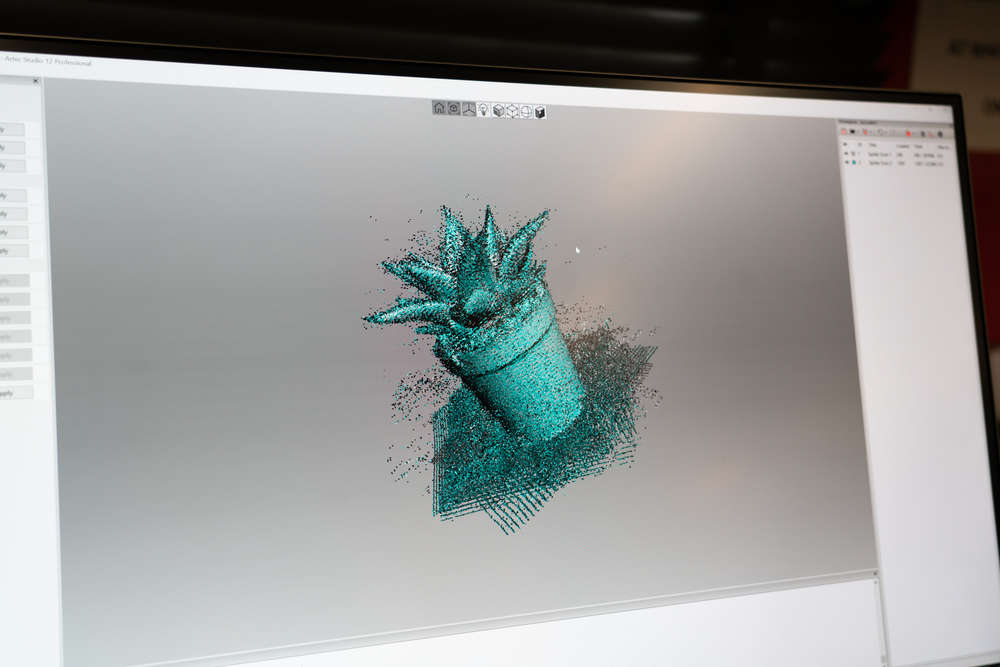
Easier to see what's going on without the texture
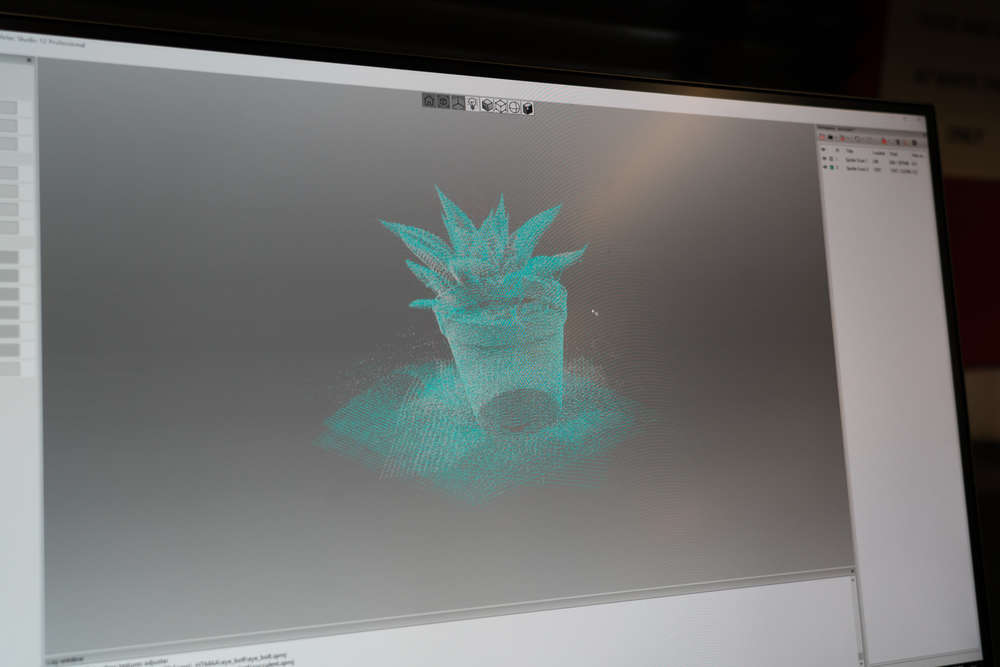
Even easier to see what's going on with the point cloud view
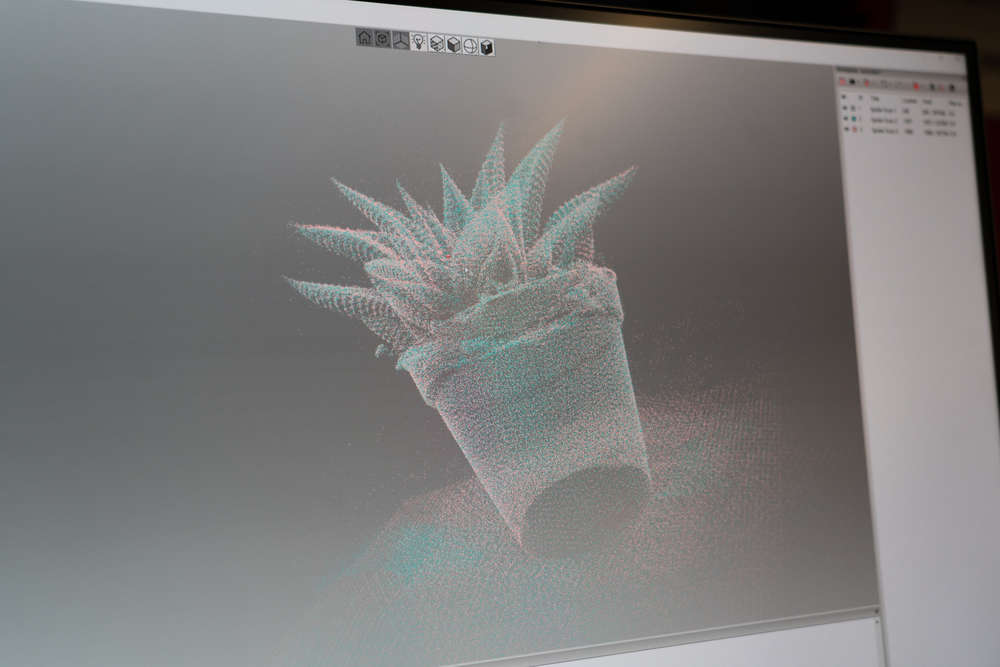
Looks much nicer once the scans are aligned

Once we have enough scans, we set the ground plane

Removing extra points

Still cleaning
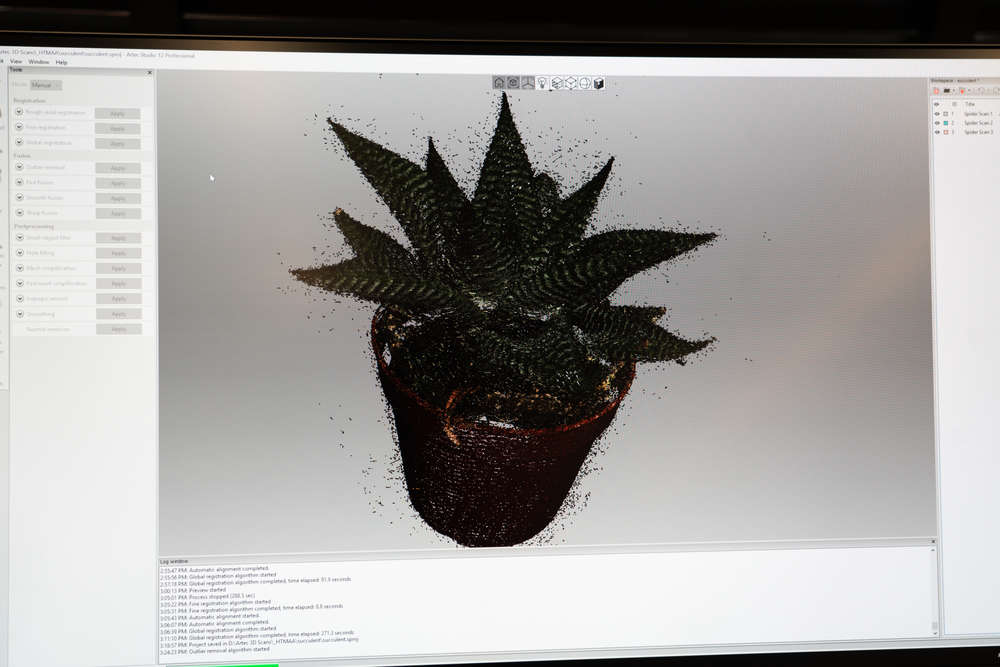
Much nicer

The solid part looks pretty good

The completed, textured mesh
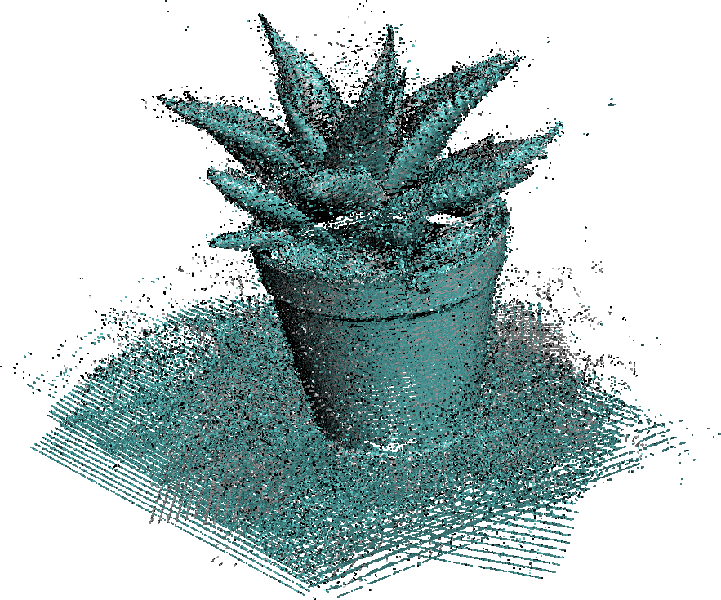
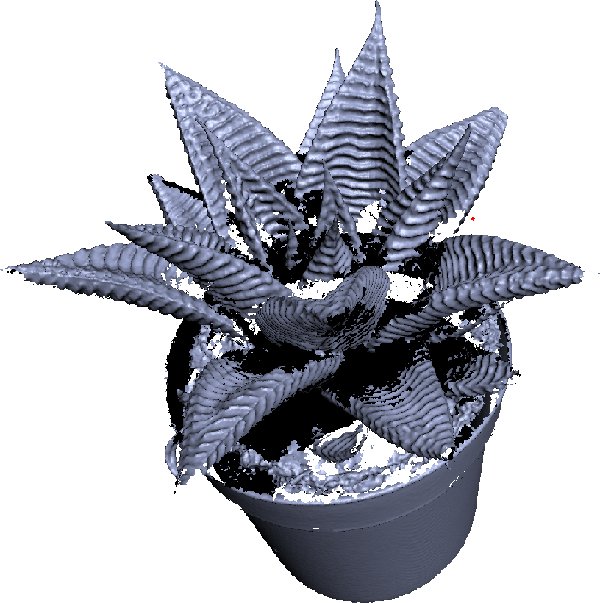
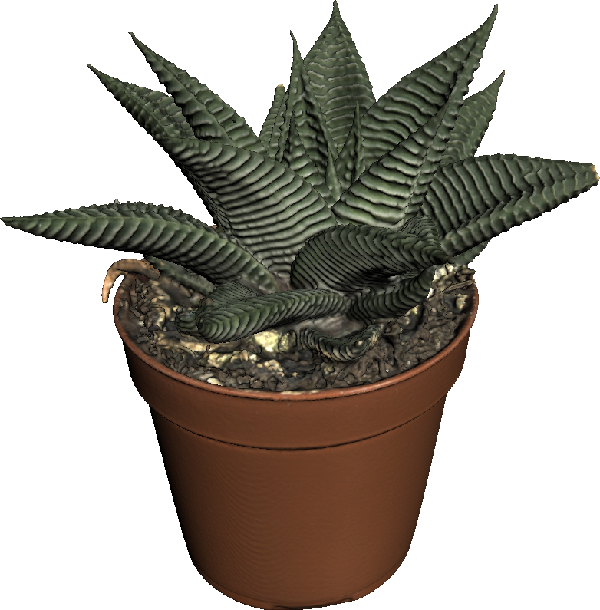
Overall I think the scan came out really well. It captured a lot more detail than I anticipated, all the way down to the individual ridges on each of the leaves. It resulted in an absolutely massive mesh, however.

Uploading the mesh to Sketchfab required a lot of reduction in Meshlab first to reduce the file size. Even after some intense reductions, the file is still 20MB (down from 100MB). You can view and download the scanned succulent from Sketchfab, above.